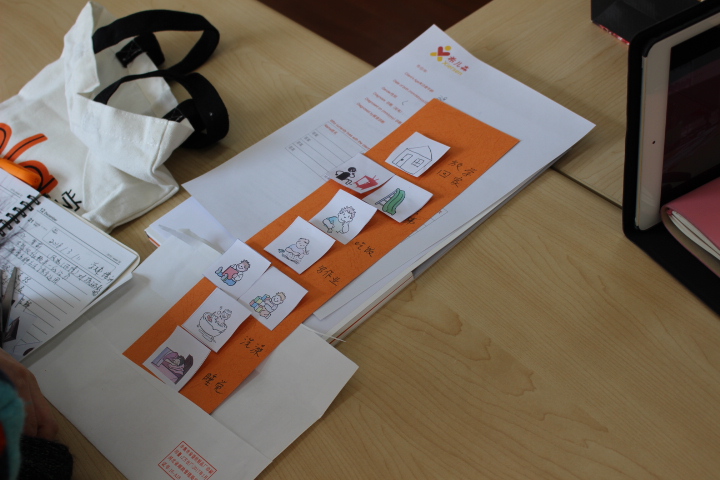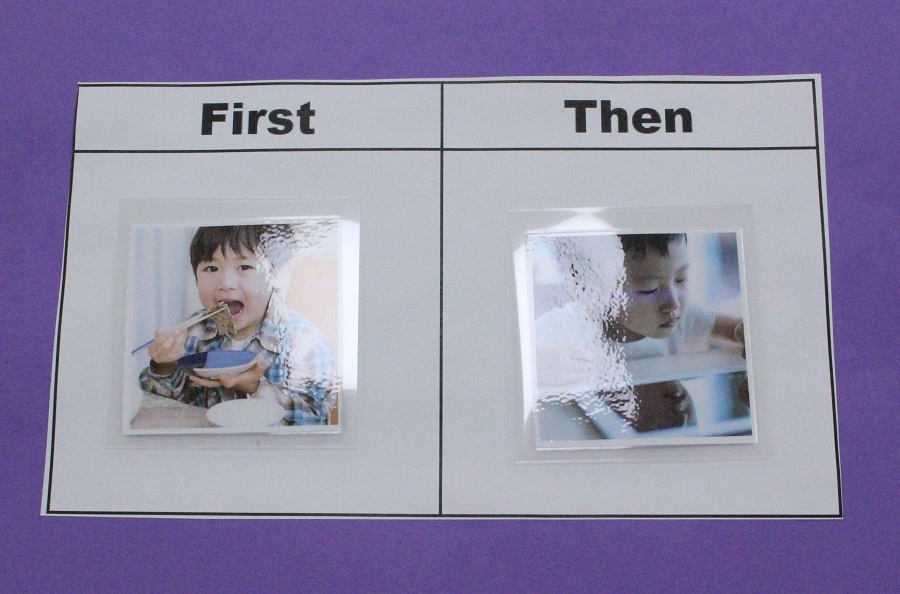We all use visual schedules to structure our lives, whether it be a calendar on your phone or a to-do list taped to the fridge.
What is a Visual Schedule and Why Do We Recommend Them?
A visual schedule lays out the sequence of upcoming activities or events represented by objects, cards, or a combination of tangible supports. It lets a child know where they should be and when. Click here to learn how to make and use visual schedules.
Many children, especially those who are on the autism spectrum have difficulty expressing themselves. They may respond favorably to predictable routines and have strong visual memories but poor auditory processing. Using visual supports allows children to initiate and communicate independently. For children with ASD, a visual schedule not only establishes a predictable environment where they feel safe, but it also provides motivation by helping them better understand expectations and when preferred activities will occur.
Visual schedules can also help children with other special needs. Children with ADD/ADHD who have trouble focusing, carrying out tasks, and transitioning from activities can benefit from having a visual schedule helping them understand and stick to routines. Even typically developing children benefit from additional visual information.
Visuals Provide:
- Clarity and predictability to routine.
- Helps organize child’s world.
- Provides concrete, visual information.
- Helps communicate expectations and consequences.
- Helps child communicate needs and wants.
- Reduces anxiety and behavior problems

Benefits of Visual Schedules
There are three main benefits of using visual schedules for children with ASD.
1. Enhancing receptive language:
A visual schedule turns time, an abstract concept, into something concrete and physical. Because children with ASD have strengths in visual processing, pairing time, activities, and events to a physical schedule aids them in receptive language abilities, or understanding information.
2. Reducing anxiety and teaching flexibility:
For children with ASD, ADD/ADHD, or other special needs, not knowing what to expect next can cause them to feel especially overwhelmed and anxious, leading to behavioral problems.
3. Visualization:
Being able to “see” how their day is structured and being able to refer back to it to throughout the day may be physiologically calming for children with ASD. It helps them prepare for transitions between activities or small changes to their daily routines, creating both stability and flexibility in routines.
4. Independence:
Children with ASD will slowly become familiar with how visual schedules work and learn to effectively use them without adult prompts and cues. This gives them skills to live more independently.

Whether your child is on the autism spectrum or not, give visual schedules a try to encourage children’s independence, get them to stick to a routine, and potentially improve behavior and reduce anxiety. You can also get together with other parents for a fun few hours of arts and crafts, making visual schedules for your children and sharing your routines!
